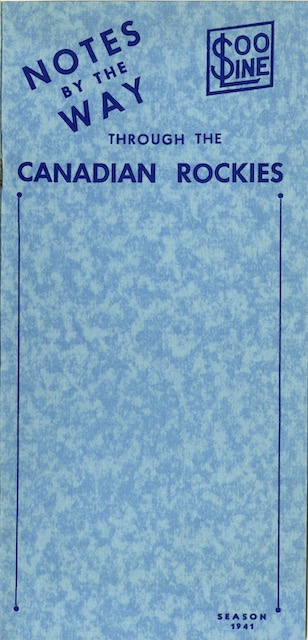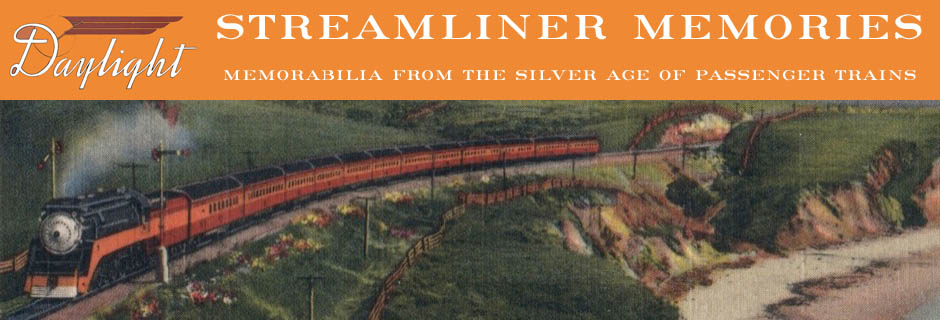The rather boring but heavy-duty cover of this odd-sized (approx. 4-5/8″x9-5/8″) booklet hides the fact that it contains many beautiful photos inside, and in particular four in full color, plus one color painting. Canadian Pacific was one of the first railroads to take advantage of Kodachrome, which had been introduced in 1935, in its advertising and menus.
 Click image to download a 19.9-MB PDF of this 46-page booklet.
Click image to download a 19.9-MB PDF of this 46-page booklet.
Still, it is a little bit of a surprise to see color photos in an along-the-way booklet. Passengers generally saw such booklets only after they had purchased tickets and were on the trains, so there wasn’t any need to use color photos to sell the trip. However, Canadian Pacific still wanted to sell visits to its hotels in the Rockies, and the color photos used here helped do that.
That leaves open the question of why one of the color pictures was not a photo but a painting. It is possible it was a colorized black-and-white photo as it shows a late 1920s or early 1930s automobile crossing a bridge at Emerald Lake Chalet. This may simply be a case of having the color illustration on hand and it being easier to use it that to commission a new color photo. The chalet and bridge still exist, although they have been completely rebuilt since this booklet was published.
The cover says this booklet was issued by the Soo Line, Canadian Pacific’s U.S. subsidiary. The back cover also lists C&NW and Canadian Pacific, as travelers from Chicago to Banff would have taken the C&NW to St. Paul, Soo to Moose Jaw, and Canadian Pacific from there. Schedules for the Soo-Dominion and Mountaineer are given on pages 3 and 4. Those pages plus pages 36 and 37 are highlighted with some headlines in cyan and magenta, an artifact of using the CYMK four-color process for the photos.
The inside back cover has a color fold-out map showing Canadian Pacific, Soo, and Spokane International routes. The C&NW route between Chicago and St. Paul is also shown, but not other C&NW routes probably because they potentially competed with Soo Line or CP trains.
